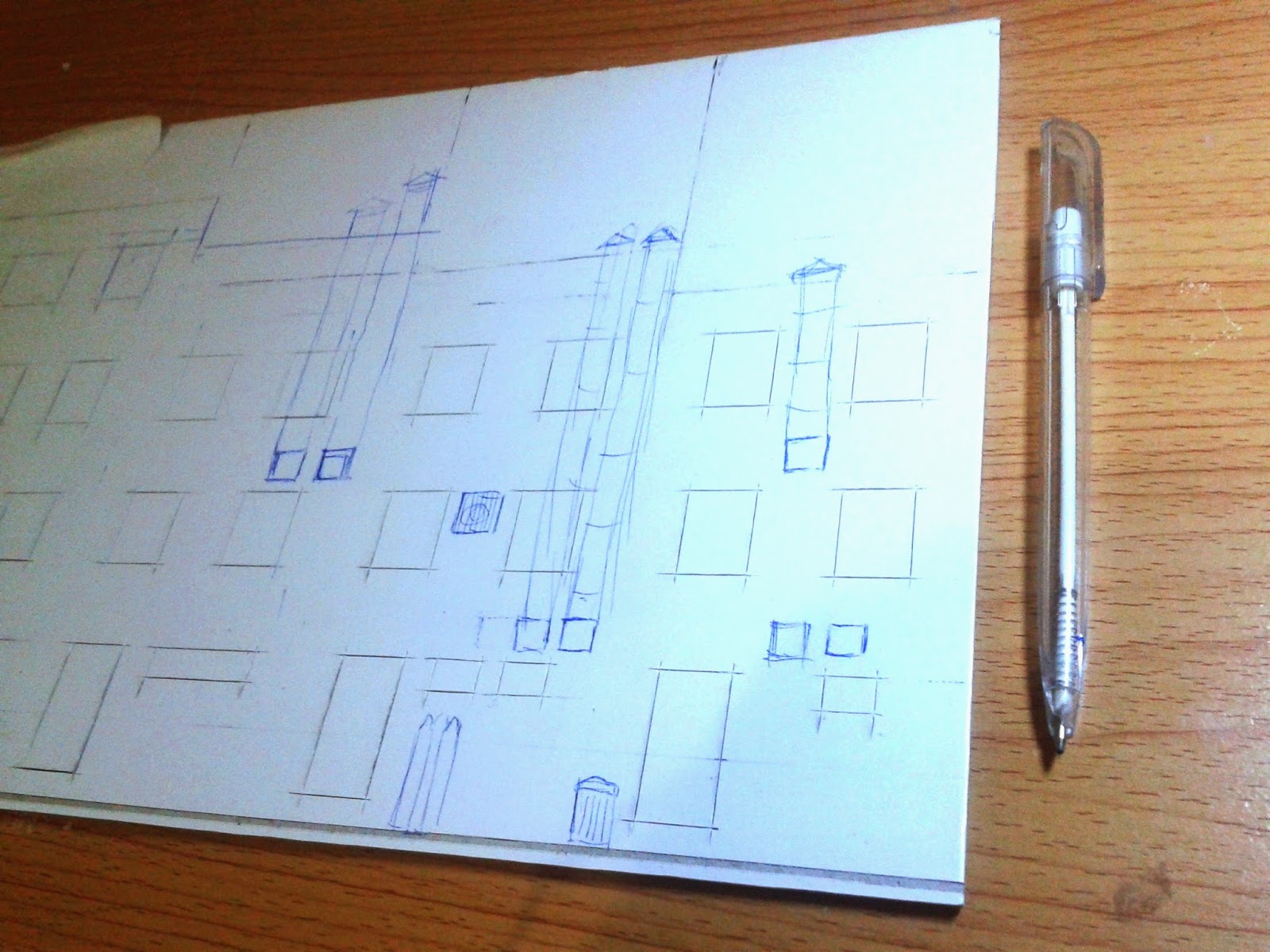The base is out of 3/4 inch marine plywood, though it's a bit expensive compared to an ordinary plywood but it's more resistant from water and wouldn't warp or bend easily when moisture seeps in.
And since the surface of the plywood was rather smooth and flat, I made it rougher, otherwise, it would be difficult to glue on the flattened clay, and may peel off when it dried, to avoid that, I stroke crisscross cuts and scratches on the surface just like our neighbor's angry pregnant cat scratching the hood of my car, damn! Back to topic, as an additional protection from moisture I applied layers of lacquer sanding sealers all over it including the sides to completely close the porous surface of the wood, alternatively, painting it with lacquer paint will do good as well. I let it dried in a well ventilated area for a couple of minutes, then applying textures is next.
(Here's the pic, scratched, sanding sealer applied and the glue was spread all over the surface, ready for road texture)
But before that, checking some reference images of groundwork on the internet is a sure guide to depict a real convincing textures, as a diorama maker, I have always been observant to our surroundings but a still image of a particular finish is also necessary.
Again, same technique as described on my previous posts about prepping the clay. Once more, I used air drying clay for the asphalt roads and pavements. Here, I'm going back to the routine preparation of kneading, flattening and laying of clay, as usual, I rolled out and flattened the clay to the desired thickness and glued them flat on the base. While the clay's still wet, I gave it the texture treatment by covering the top with a sheet of sandpaper grit #100, I pressed on the sheet very lightly against the surface with a rubber hammer. While still wet, I also used a scotch brite ( the green side) to add a different texture.
When the surface have been stamped, I let the clay dried up completely in an open space indirect to sunlight for about an hour, and then I started stamping it again to imprint finer but sharper textures, since the clay was already hard, I had to do it a little harder, the purpose of the technique was to kill the soft/deep textures as a result of wet clay stamping and i needed the final textures to be a little sharper.
Then, the sidewalk around the building's next. The pavements were made of 1.3mm cardboard that I've measured and cut according to the layout/sketch. I scored the bricks with a dulled hobby knife in order for me not to actually cut the sheet all the way through but only to score the surface to create shallow but well defined grooves. I needed to hide the obvious paper finish of the pavement to look like a real cement bricks or tiles so I had to fake any element that would make the final outcome unreal. The process begins, I softened a small amount of clay in a container with water, the formula is 10% clay and 90% water (now, I'm a chemist!). I mixed them thoroughly until I got the gooey consistency of a paste. And then I spread it randomly on the pavement with the use of an old wide brush , as we all know about clay, they look naturally matte when dry which is the perfect effect that I'm looking for.
(this is softened clay, though it looks like a little more water is needed)
The already dry softened clay spread-out around the cardboard (pavement)
As a guide, I drew on the surface the tile design of the pavement.
And that is all the works I have made for the base and the painting will be posted on a separate post some other time.






























